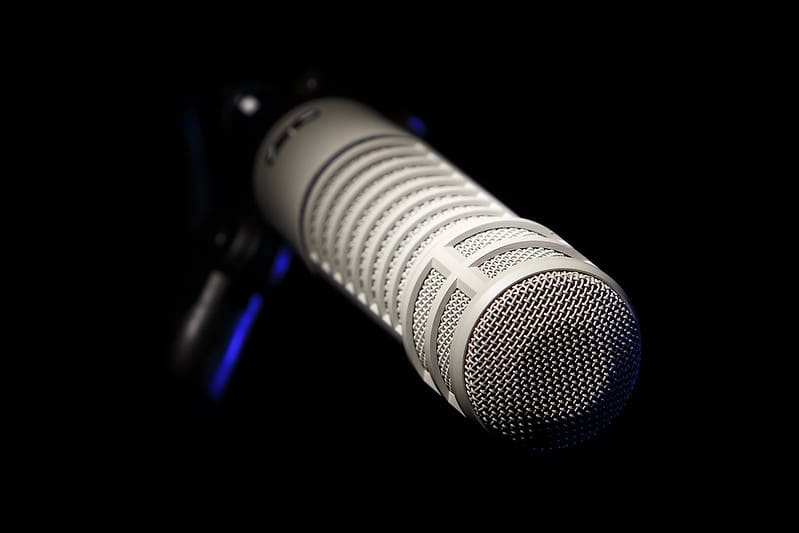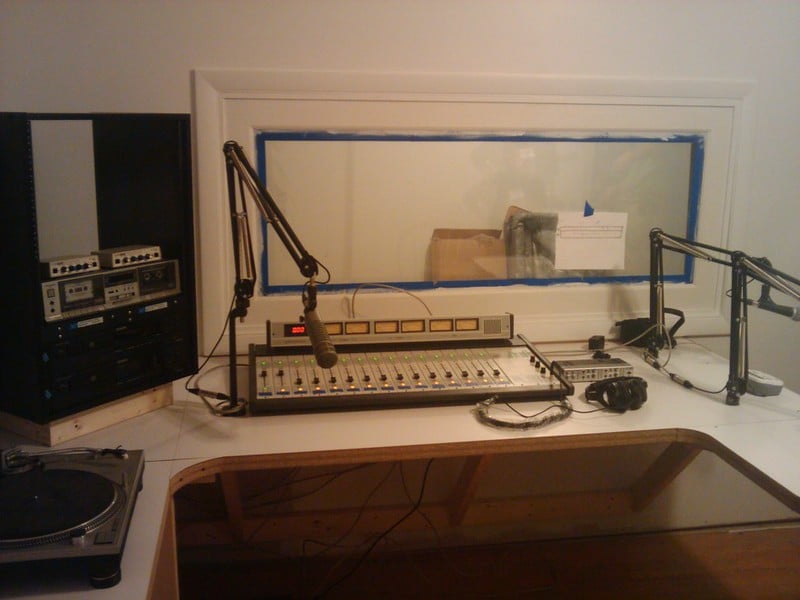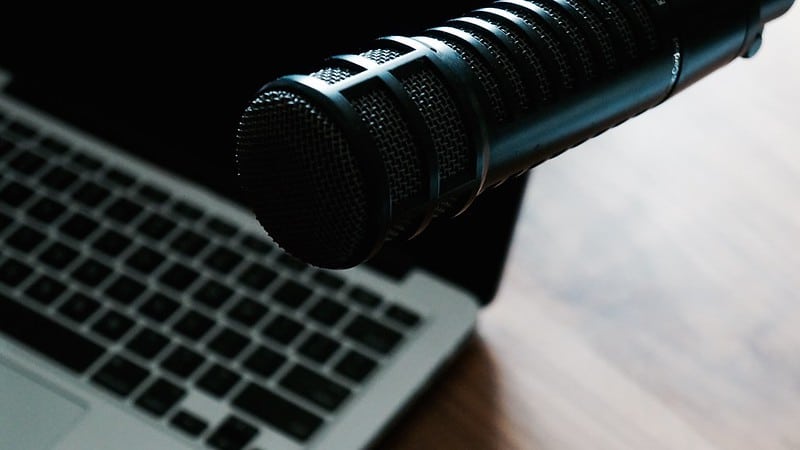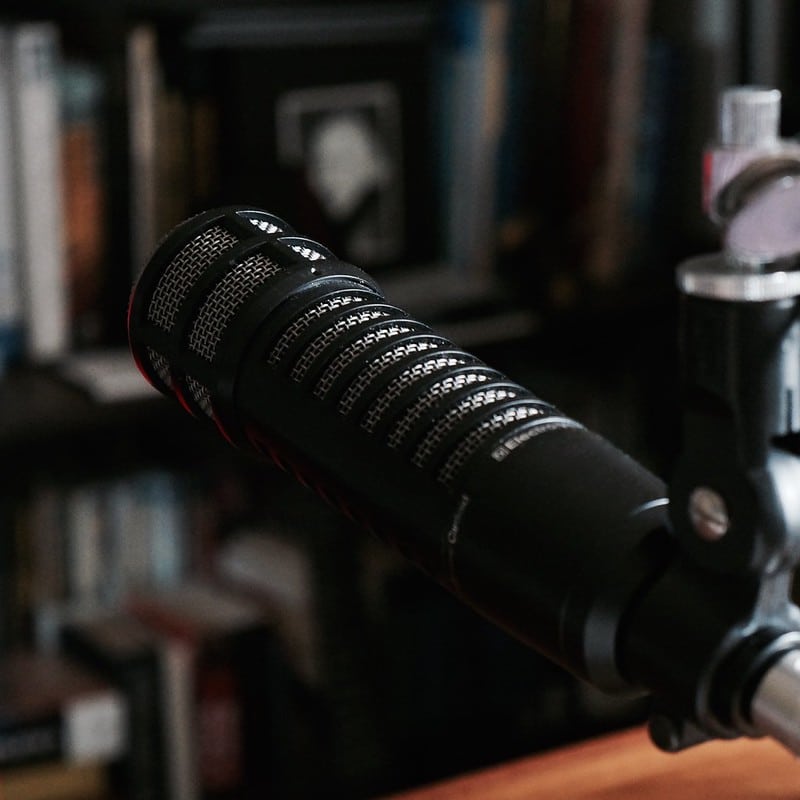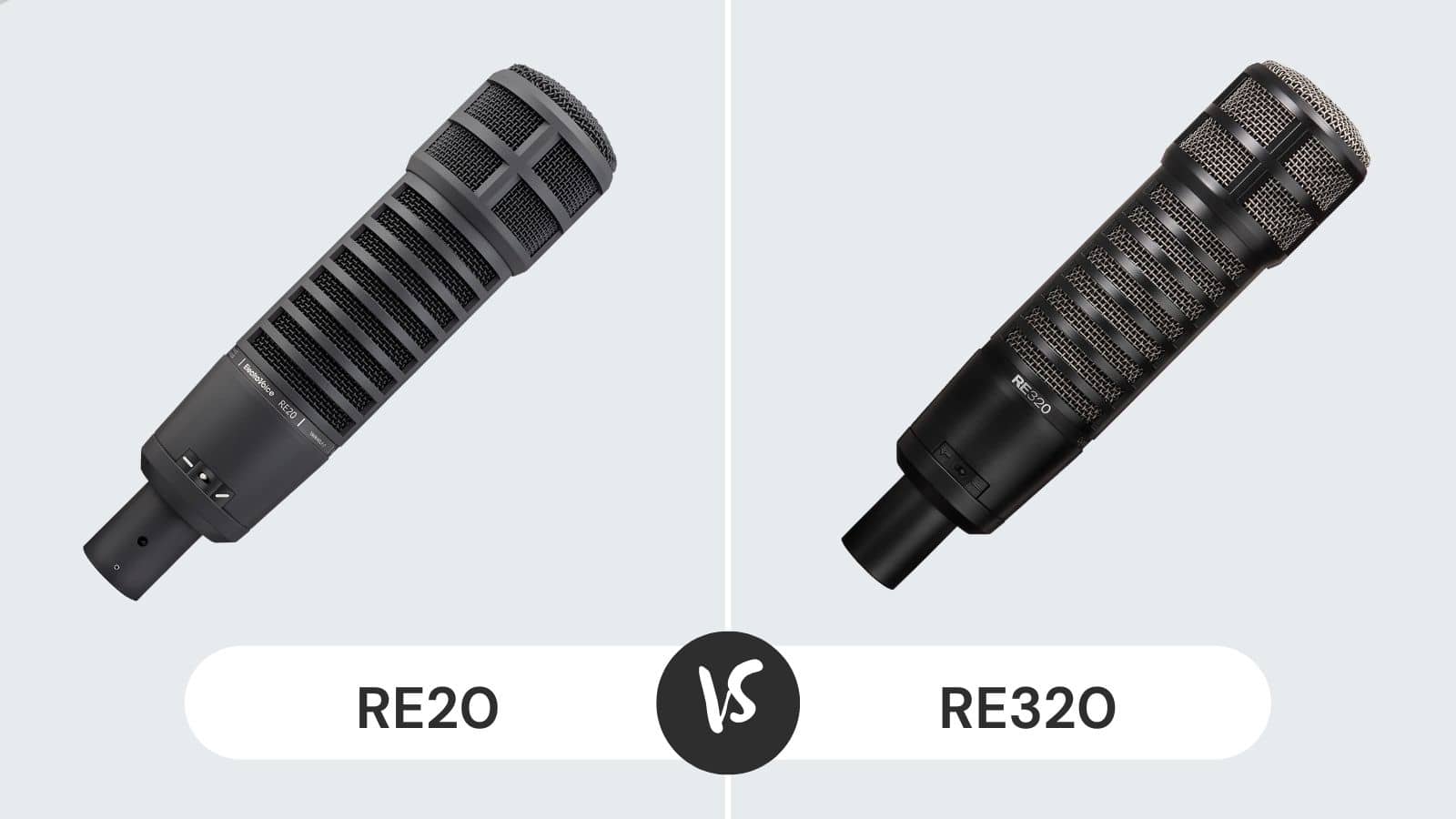
A mic is an important component of the music and podcast recording setup. The mics are used during recording and broadcasting, which is why the mic should be able to grasp the smallest nuances in the sound.
Similarly, the mics must have noise cancellation, high clarity output, and should be able to pick the voice tones.
Having said that, RE20 and RE320 are two amazing mics that are suitable for people who want rich and warm tones. However, there are significant changes in the features of these mics.
A Comparison Between Re20 vs Re320
| Features | RE20 | RE320 |
|---|---|---|
| Color | Silver | Black |
| Frequency response | 45Hz-18kHz | 30Hz-18kHz |
| Output impedance | 150 ohms | 150 ohms |
| Weight | 1.62 lbs. | 1.5 lbs. |
| Connector | XLR | XLR |
RE20
This mic designed by Electro-Voice is a dynamic broadcast mic with industrial standard features to deliver maximum background noise cancellation without compromising on tone and quality of the voice.
The mic is known for its deep and rich sound, but it’s not as bright. There is a variable-D response in this mic, which results in uniform sound quality. The mic has a huge sweet spot.
1. Sound
Given the industry-standard features and positive impact on sound quality, it’s one of the best mics with a higher expression. It can produce high-quality and reliable signals, making it suitable for radio broadcasting and live sessions.
It promises maximum noise cancellation. For instance, if you are live recording, it will neglect the street and room noises without cutting the main sound. It has a huge dynamic diaphragm and thick foam, which leads to higher dampening.
Many people have complained about the dark and weak sound, but it still has high-end signal quality, resulting in smoother output.
The mic is integrated with humbucking coils, which helps neutralize the induced music signals, and the condensers are electrically sensitive and complex, leading to better sound quality.
In addition, the grilles and mic help shield the music since it has a metal casing. Overall, it produces deep, neutral, rich, and smooth sound.
2. Features
The mic comes with a shock mount, which eases the installation. This mic has a true cardioid without any coloration, which means if you angle your mic from the main source, the sound quality will remain the same.
For this reason, it’s a suitable choice for vocalists who want to reduce the hard S sounds and p-pops. It has a frequency response of 45Hz to 18,000Hz.
Given the variable-D response, you will enjoy a zero proximity effect, so you can keep your mouth closer to the mic without worrying about hyping the bass frequency.
In addition, it can be used with kick drums and acoustic guitars, along with podcast and broadcasting equipment. This is because it is a powerful mic as it produces the studio-condenser sound.
It can result in smooth and powerful sound because it can tailor the frequency response according to the voice. It utilizes a large diaphragm and a humbucking coil to ensure accurate sound.
Similarly, the vocal presence is extremely strong, irrespective if you have a low voice or a high voice.
The mic has been integrated with the bass roll-off switch, which works great to cut out the low frequency when playing with deep vocals. The users can easily move around the mic without causing significant changes to sound output.
In simpler words, the sound won’t go from loud to silent. It utilizes the pure cardioid pickup pattern, promising zero coloring. It means that you will be able to pick up audio from the capsule’s front while blocking out the background noise.
There is an internal pop filter with heavy-duty construction and a shock mountain system, promising the best sound output.
The pop filter can cut out sound errors on low and high ends, so you can cut out the unwanted frequency and sound through editing. In addition, the filter removes the popping sound that is caused by the mechanical impact of air movement.
The mic was originally designed for studio and film recording, but it can be used for broadcast settings as well. The mic is particularly designed to capture the human voice, given the specific frequency range.
Having said that, it can be used for recording radio series and podcasts. Moreover, you can use it for streaming and YouTube since it has a higher SPL, so you can record loud sound without any distortion.
Pros
- Maximum background noise removal
- Safe from RF interference
- A huge sweet spot to deliver zero proximity
- Industry-standard features
- Smooth and deep sound
Cons
- Expensive
- Bulky
RE320
This is another dynamic microphone designed by Electro-Voice and has a large-diaphragm design, which is a promising choice for broadcasting and radio recording.
The mic is extremely sensitive and is used in moderately treated and silent rooms to deliver effective performance.
It can be used for signing and recording the spoken words, particularly when you want to capture the nuances and details of the voice, resulting in smoothness and silkiness in the sound.
1. Sound
The mic promises a transient response and has a more forgiving configuration if the mic is moved (it won’t cause any changes to the volume). The mic promises a deep and low-end response without compromising on richness of the sound.
The sound is pretty accurate for human voices as well as bass cabs and kick drums. It has a moderate proximity effect, but it won’t change the quality of sound that’s directed off-axis and on-axis.
Since it has a moderate proximity impact, you will need to keep some space between the mouth and mix. This is because if you put it closer to the mouth, the sound will be distorted and loud, so just maintain a proper distance.
As long as you are maintaining the distance, the sound will be smoother since it has a high-sensitive design. It has a bright character since it covers the low end, and the highs will be around 4.5dB, which is pretty significant.
The higher transient response of this mic makes the sound hotter, and you can also reduce the EQ of the mic to create a flatter sound. In simpler words, it has a promising sound quality without using external EQ.
Keep in mind that it has a different sound as compared to conventional flat mics, so you will need time to get used to the mic.
Still, the flat sound response is sufficient for voiceovers and podcast recording, while the bright response makes it suitable for music recording.
2. Features
This mic has been designed for instrument miking because it excels at working with brass instruments, such as trumpet, sax, and trombone, and can be used for recording the wind as well.
It can produce clean sound without compromising on clarity and maintaining the lows. It can work great with toms and kick drums, but you have to use the special EQ mode to create the boxy sound.
The mic is known for its solid build because it has metal material. The mic has a longer design, which means it looks amazing on the camera. However, it doesn’t come with a mount, so you’ve to purchase your own mount or a table.
As far as the pop filter is concerned, it’s optional, but it has higher protection from radiofrequency interference and high-pitched signal interference.
The mic develops clear, low-end bass and punchy music. In addition, it leads to booming and deep voices, which creates another layer to the voice. It has a capsule design and boasts a neodymium magnet that promises better sound output.
Pros
- Durable and solid build
- Higher protection from infrared interference
- Smooth and clean sound
- Higher clarity
Cons
Tends to overheat
The Final Verdict
Both these microphones are designed to help with sound recording, but there is a significant difference in the sound quality.
RE20 mic produces deep, neutral, rich, and smooth sound, while a RE320 mic is suitable if you want to create punchy, deep, and low-end bass. Also, the RE20 mic is better for people who like to move around because it promises zero proximity delay.

